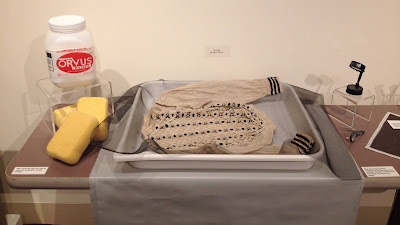The warmth of autumn is waning, and there's no denying that winter's chill is on the way, if not already here.
That's OK. Like many of you, I'm looking forward to seeing family and friends this week, gathering around the table, amazed and grateful for the bounty we enjoy. Brilliant color, even against a gray sky, is just one of the things I'm thankful for right now.
Coincidentally, last week I attended the opening of tapestry artist Tommye Scanlin's show at the University of North Georgia. It was a real joy to see the paintings she has done on recent residencies at Hambidge Center and the Lillian E. Smith Center, many of them featuring larger-than-life renditions of leaves, and to examine in person the tapestries that have resulted from those paintings. I studied for a long time the interesting variations in color and visual texture in the backgrounds and borders of these pieces. These tapestries are more than simply translations of paintings into yarn--though in Tommye's hands that would be satisfying in itself. In her most recent work Tommye is exploring and exploiting uniquely woven possibilities of expression. The show is up through Dec. 11; I urge you to see it.
Here on my own loom, I'm finally getting to work with saturated reds and oranges on the tapestry in progress. Soon I will be weaving several brightly colored shapes all at once in this piece! That's pretty exciting after all those acres of plain white.
Here's hoping your Thanksgiving is warm, festive, and brightly colored!






















